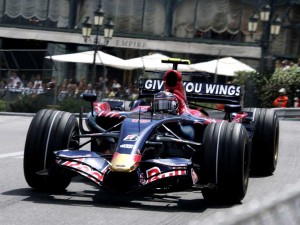
Part II left off in 1995 when Elton Julian’s possible ride at Larrousse vanished due to financial reasons. 1995 can be seen as the turning point in the CART/F1 war with the emergence of the Indy Racing League (which could be another multi part post in itself). The emergence of the IRL divided open wheel racing in America which destroyed the power CART had as it no longer had the Indy 500 and allowed Nascar to develop into the 800 pound gorilla it became. The fall of CART and the rise of Nascar caused a change in direction in the development of young racers in America. Young drivers who wanted to be rich, famous and race in the biggest series only thought of Nascar as sponsors and manufacturers began throwing money at the series.
By the end of 90’s, CART was still offered great racing, but was no longer a threat to F1. It was now seen as a second rate series where there were some talented American’s racing against foreign drivers who were either “rejected” from F1 or waiting for an F1 seat to open up.
One of the criticisms of F1 during this time period was that in order for F1 to be a true World Championship, it needed to have a race in America. Many of sponsors and manufacturers in F1 viewed America as one of if not their biggest market. In 2000, F1 returned to America in 2000 with the USGP at Indy. Yes, the famed brickyard built a road course inside the oval. Perhaps it was Bernie Ecclestone’s way of saying thank you to Indianapolis Motor Speedway boss and IRL creator Tony George for starting the IRL and destroying CART.
The first USGP was a major success with and estimated crowd of 225,000 which is estimated to be the largest attendance for a Grand Prix in the modern era. The races after however were less attended and featured controversies such as the 2002 Ferrari “Dead Heat” and the 2005 race where all the Michelin teams withdrew after the formation lap leaving only six Bridgestone shod cars left to run the race. The 2007 race was the last USGP held at IMS due to dwindling attendance, the high sanction fees of having a Grand Prix and lack of a title sponsor
In 1997, Red Bull entered the US market. Red Bull was already know to fans european racing as it sponsored teams and drivers in a wide variety of series including F1. Trying to link their passion for racing with their new market of America; in 2002 Red Bull teamed up retired CART star and former F1 driver Danny Sullivan to create the Red Bull Driver Search. The program’s goal was to create an American F1 Champion, by taking young American talent and develop them in the open wheel racing ladder with Red Bull backing.
One of the first driver’s chosen was young karter with the perfect name for a racing driver: Scott Speed. Speed was a young karting star from California who had shown promise by winning the Formula Russell Championship in 2001. In addition to living up to his name, Speed was young, good looking, personable and very much an individual; the type of driver Red Bull could easily market.
Speed’s first year under Red Bull’s wing was a disaster. Speed was running in British F3 championship when he began suffering from Ulcerative Colitis and had to return to the US to take care of his condition. 2004 was a better year for Speed as he won Formula Renault 2000 Eurocup and the German Formula Renault championship in Red Bull colors. For 2005, Speed was promoted to GP2 and finished 3rd in the Championship. In addition to his Gp2 duties, Speed also acted as the Red Bull F1 team’s test driver at Canadian and US GP’s.
By 2005 it looked as if the US would finally have an American in F1 with Speed having success in the European Formula ladder, something an American hadn’t done in many years. Speed with combination of talent, Red Bull backing and the need for F1 to make ground in the US had a solid chance at being in F1.
Speed was not the only young talent Red Bull had under their wings. By 2005, it seemed as if 90% the young promising driver’s on earth were involved in the Red Bull Junior Program. In 2005, Red Bull bought the struggling Minardi F1 team and re named it Toro Rosso. Toro Rosso acted as junior team to Red Bull’s main F1 squad. A place where there young talent could develop in F1 without being on the main squad.
For 2006, Speed was a Toro Rosso driver, a team part owned by Red Bull and run by Franz Tost and Gerhard Berger. Speed and Toro Rosso struggled with reliability and crashes, usually finishing in the bottom half of the table. As the season went on it became clearer that he was favorite son of the Red Bull duo of owner Dietrich Mateschitz and racing guru Dr. Helmut Marko and not team principles Tost and Berger.
In 2007 was beginning of the end, Speed was confirmed as a Toro Rosso driver late in the pre-season and was tipped by many to be on the hot seat. Speed suffered with poor reliability and crashes. Speed’s time as an F1 driver would end with European Grand Prix at the Nurburgring.
Tension were high in the Toro Rosso camp between the drivers (Speed and Tonio Liuzzi) and Team Principles Tost and Berger. Speed went public with the tension telling the media that weekend that the team was trying to get rid of him and Liuzzi. The principles blamed the drivers for team underperforming while the driver’s blamed the car and poor management.
As for the race, Speed started 18th on the grid. One highlight of Speed and the Toro Rosso was that they worked well in the wet. Earlier in the season, Speed had been the fastest in a wet session at the Monaco GP. The European GP became a rain soaked race, Speed worked his way up from is lowly starting position a up to 6th when everything began to unravel.
The Toro Rosso pit crew expected Liuzzi to come in first and fumbled Speed’s pit stop, over a minute was lost during Speed’s pit stop. During this long stop, the rain became worse. After his pit stop, racing into turn one. Speed followed five other cars into the gravel trap. After this, the race was red flagged and Speed was forced to retire.
When returning to his garage, an upset Speed was met by a just as upset Tost. Tost yelled at Speed for crashing and Speed in return yelled at Tost for the botched pit stop. When Speed turned away, he was then punched in the back by Tost, Speed walked away and was then grabbed by Tost and shoved against a garage wall. Speed moved into the center of the garage and in front of the whole team told Tost that if he wanted to punch him to do it in front of the whole team. Tost declined, Speed then told Berger that if Tost ever touched him again he would knock him out.
On July 31st, Speed was released from his Toro Rosso contract and replaced by Sebastian Vettel (what ever happened to him). It would be the last time that an American would be part of the driver line up (not counting 3rd and test driver’s) for an F1 team.
So why did something that seemed so promising go so wrong? First, the shotgun marriage of the team and drivers was a failure with Tost and Berger being “forced” to take young Red Bull drivers. In association with that there were differences in why the team was not performing up to expectations. Team management blamed the drivers while driver’s said the car was not able to do what was expected.
Second, one of the criticisms of Speed in the wake of the everything that had gone wrong was his demeanor. Speed’s confident attitude was received by some as cock and arrogant. Acclaimed F1 Pundit Peter Windsor blamed Red Bull driver coaching and development in part for Speed’s failure in that Speed wasn’t self critical enough. Windsor noted that Red Bull driver’s have not been taught self assessment and blame others for the lack of result.
While Speed may have burnt the Red Bull F1 bridge, they were not ready to let go of their investment. After F1, Speed with Red Bull backing started a Nascar career. The Red Bull/Speed Nascar partnership was unsuccessful and Speed was released by the Red Bull team at the end of 2009. Speed currently drives for a backmarker team in the Sprint Cup series.
The F1 circus would return to US in 2012 with the Austin Grand Prix with no American F1 drivers on the grid which takes us to Part IV. Is there anyone on the horizon and what will it take to get an American into F1.

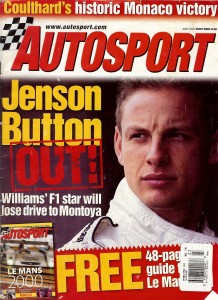
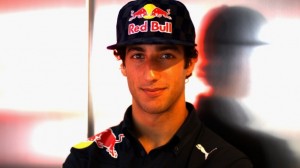
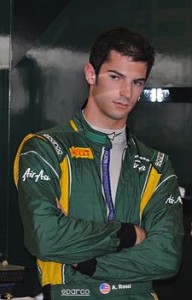

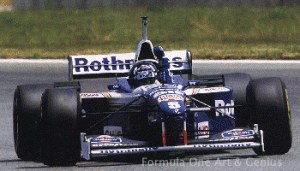
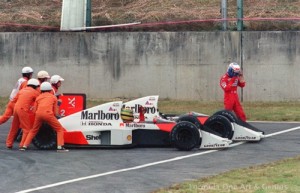

Recent Comments